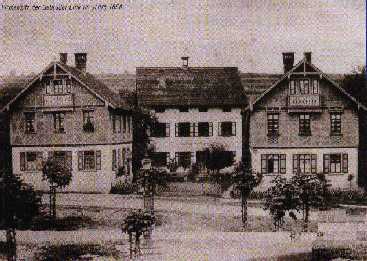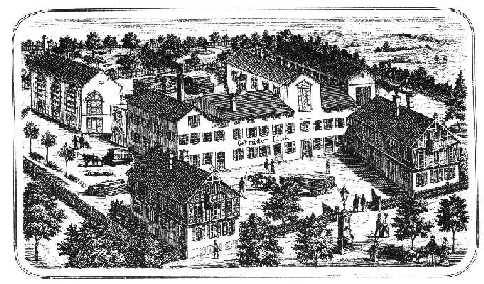|
The Link house was founded in 1851 by the twins Paul and Johannes Link.
Their training as organ builders was carried out in Blasius Braun's organ factory in Spaichingen, and during their first years of profession they worked at the Walcker Firm in Ludwigsburg (not to be confused with the Walker organ factory in England). In 1851, as a result of joint work with the Gruol Firm, they completed their Opus 1, in the Giengen Stadtkirche. The completion of Opus 1 led them to move their organ building first to Giengen an der Brenz. They were later moved to Memminger Torplatz, where it still remains in the same constructions of yesteryear. Since then it began his feverish activity, both inside and outside Germany. Thus, in 1886 they built an organ for St Anne's Cathedral in Bombay (India). Then came various orders for India. In 1890, the Gebrüder Link firm had already produced over two hundred organs. The lithograph shows the Link organery workshops as they remain today. more... |

|
|
|

|
|
The above lithography, a period lithography, probably executed for "marketing" purposes shows the workshops with a size much larger than they ever actually were It was not in the past nor is it now. Between the years 1905‑1906 the system was modified. the Opus 1, mentioned above, making it a new 51‑register instrument. In this construction, the company focused on all his experience and knowledge. Today, that organ, the one renamed opus 450, constitutes the monument Württemberg's most important romantic church, as far as organs are concerned. In 1909 he began a new era of exports, with the order of an organ for the Church of Christ in Xingtau, China. In this way it began export to various parts of the world, e.g., to South America (in 1998 the organ of Asunción, Paraguai was restored), Sweden, Norway, Finland, Russia...... The pinnacle of the Link Brothers organization occurred between 1887 and 1914, period in which no less than 484 organs were built. After the First World War, the company had a notable contraction due to both to inflation and to the financial problems of the time. The nascent "Orgelbewegung" (organism movement of the 1950s) contributed with the renaissance of German organ building. However, the Second World War ended with everything. Only after the end of the war, with very severe requirements, the development of the company was able to restart. The German miracle boom of the 1960s restored its an enormous boost to the organization. Currently (2006), it is being building opus 1085. |